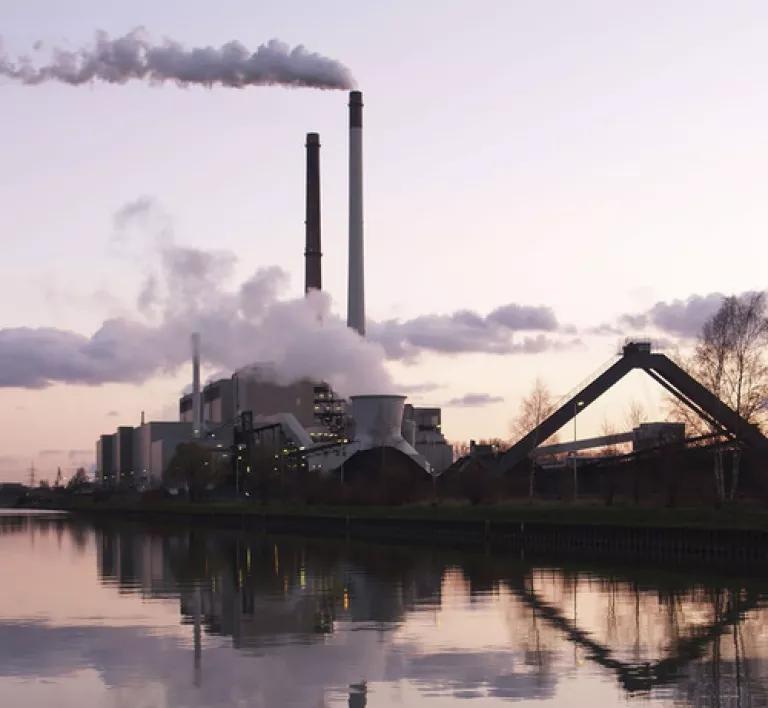NRDC experts unveiled a groundbreaking proposal today that will confront the threat of climate change and make our air safer to breathe. It calls for cutting carbon pollution from existing power plants—our nation’s largest source of global warming pollution—and giving each state broad flexibility to meet the standards.
And because it draws on the Environmental Protection Agency’s existing authority under the Clean Air Act, America can start moving down a cleaner, more stable path right now.
We certainly can’t afford to wait any longer. A new study released this week reported that global emissions of carbon pollution hit record highs last year and will probably spike again in 2012. We are already seeing the effects of excessive carbon levels in our communities.

Weeks after Hurricane Sandy slammed into the East Coast, thousands of residents are still coming to grips with flooded buildings and hefty cleanup costs. They aren’t the only ones picking up the pieces after extreme weather this year. Farmers across the country had to plow under crops during the worst drought in 50 years. Hundreds of Western families were left homeless after devastating fires tore through their communities. And residents from Illinois to Virginia were blasted by a freak wind storm that left 23 dead and 1.4 million people without power.
Cities and states are starting to plan for this new climate reality in mind. But simply waiting for the next bout of extreme weather is not enough. We have to tackle the problem at its source. America is known for facing challenges head on and solving them with action, resourcefulness, and innovation. We must do the same with the climate crisis.
The American people agree. The majority of voters in swing states said they preferred leaders who support EPA effort to reduce carbon pollution, according to a September survey by Public Policy Polling. It’s time for President Obama to build on this support and make carbon reduction a top priority for his administration.
The good news is he can do it using existing authority. The Obama Administration already used the Clean Air Act to set carbon standards for cars and propose them for new power plants. Now the same law can be used to address carbon pollution from existing plants, and NRDC has mapped out a plan for doing that.
Using the same sophisticated planning model used by industry and the EPA, NRDC calculated that our plan would cut carbon pollution 26 percent by 2020. It would also generate an estimated $25 billion to $60 billion in health and climate benefits, far outstripping the projected cost of $4 billion in 2020.
The enormous savings inherent in the plan have already garnered positive reviews. William Reilly, the EPA Administrator under President George H.W. Bush and senior advisor to TPG Capital said of NRDC’s plan: “This is an imaginative proposal that addresses some real needs. It deserves to be carefully analyzed and taken seriously by all the affected interests.”
Here‘s how our plan would work. The EPA would set state-specific limits on carbon pollution that reflect the fact that some states depend heavily on high-carbon energy sources like coal-fired power plants, while others rely more on cleaner cleaner-burning natural gas and renewable resources like wind and solar. It would then give states a wide range of affordable ways to meet their goal. Our analysis shows that the most cost-effective way would be through energy efficiency.
Energy efficiency is a win-win for consumers and utilities alike. Things like high-performance windows and better insulated buildings cut down on the amount of energy we use—and the need to build costly and polluting power plants. They can also save homeowners more than $700 a year, about one-third of the average annual utility bill. This makes energy efficiency one of the cheapest and fastest ways for states to achieve their carbon reduction targets.
Shifting away from dirty energy sources will also improve our health. If we cut down on the amount of coal-fired power we use, we will reduce the amount of sulfur and nitrogen oxides we breathe. Modeling shows that the NRDC plan would prevent more than 23,000 asthma attacks and thousands of premature deaths.
The benefits of reducing harmful pollution would be as much as 15 times greater than the costs.
NRDC has demonstrated that America can slash our carbon pollution, shield our communities from the ravages of climate change, protect our families’ health, and save money at the same time. In the 2012 election, the majority of Americans made it clear they want to realize these benefits. NRDC has offered a plan to do just that.



